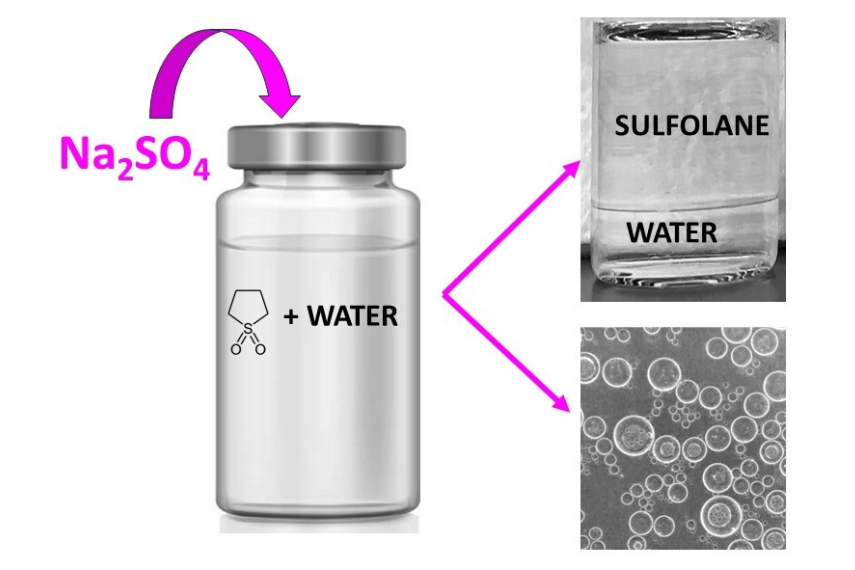Sulfolane Threat: The Environmental Worry of Industrial Solvents

Sulfolane: An Ecosystem Hazard
Sulfolane, a solvent used by the oil and gas industry impacts ecosystems with its intricate water behaviour. As it infiltrates groundwater, sulfolane poses potential threats to broader environmental systems, affecting aquatic ecosystems, wildlife, and potentially compromising human well-being. Understanding the diverse challenges associated with sulfolane, from its mobility in groundwater to the effect of water components like sulfate ions on its phase behaviour, is critical. Elevated sulfate concentrations composed of sulfur and oxygen atoms, particularly in regions like Alberta, Canada where there are sulfolane spills, emphasize the need for effective strategies to mitigate potential groundwater contamination risks. These threats encompass adverse effects on wildlife, along with health implications such as diminished lung function and worsened asthmatic symptoms.
The revelation of co-pollution, where sulfolane may mix with non-aqueous phase liquids, adds complexity to the environmental landscape. Addressing these challenges requires a detailed understanding of the mechanisms guiding sulfolane migration and the development of innovative solutions to mitigate its impact on ecosystems and human health. Recognizing the full scope of sulfolane's impact is essential for informed decision-making and environmental stewardship.
Sulfolane Movement: Possible Solutions
In addressing the intricate challenge of sulfolane migration, Drs. Erica Pensini, from the School of Engineering, Alejandro Marangoni, from the Department of Food Science, and their research team at the University of Guelph adopted a meticulous approach, employing a combination of advanced techniques to observe the behaviour of sulfolane. One such technique, electrophoretic measurements, allows studying the charge of sulfolane droplets in water, which impacts their migration in impacted aquifers. Additionally, they utilized a method called ATR-FTIR (Attenuated Total Reflectance-Fourier Transform Infrared spectroscopy) to analyze water-sulfolane interactions, which impact the solubility of sulfolane in water, in the presence of salts naturally present in groundwater.
Molecular Dance: Safeguarding Environment
The research findings present more than just a glimpse into the intricate interplay of sulfolane and sulfate ions; they carry the potential for practical applications that could make a real impact on our environment. By applying the knowledge gained to manage sulfolane effectively, it becomes possible to prevent potential risks to our groundwater and ecosystems.
Exploring the competition between sulfate ions and sulfates can lead to practical and innovative approaches for environmental remediation. These findings not only emphasize the need for further practical studies but also fuel the hope for a future where our understanding of sulfolane's behaviour translates into informed decisions, safeguarding our environment and promoting a more sustainable world.
"Sulfolane poses risks to ecosystems, and our research focuses on understanding its behaviour in water. Through laboratory techniques, we observed its microscopic interactions which help us to take further steps to manage sulfolane spills effectively, preventing environmental risks and fostering a sustainable future," stated Pensini.
Funding Acknowledgement: This research is funded by the Natural Sciences and Engineering Research Council of Canada provided through an NSERC Discovery grant.
Reference:B. Bartokova, A. G. Marangoni, T. Laredo, and E. Pensini, “Phase behaviour of sulfolane: Potential implications for transport in groundwater,” Colloids Surf. Physicochem. Eng. Asp., vol. 677, p. 132451, Nov. 2023, doi: 10.1016/j.colsurfa.2023.132451

Associate Professor,
the College of Engineering and Physical Sciences

Professor, Food Science Department,
Tier I Canada Research Chair in Food, Health and Aging